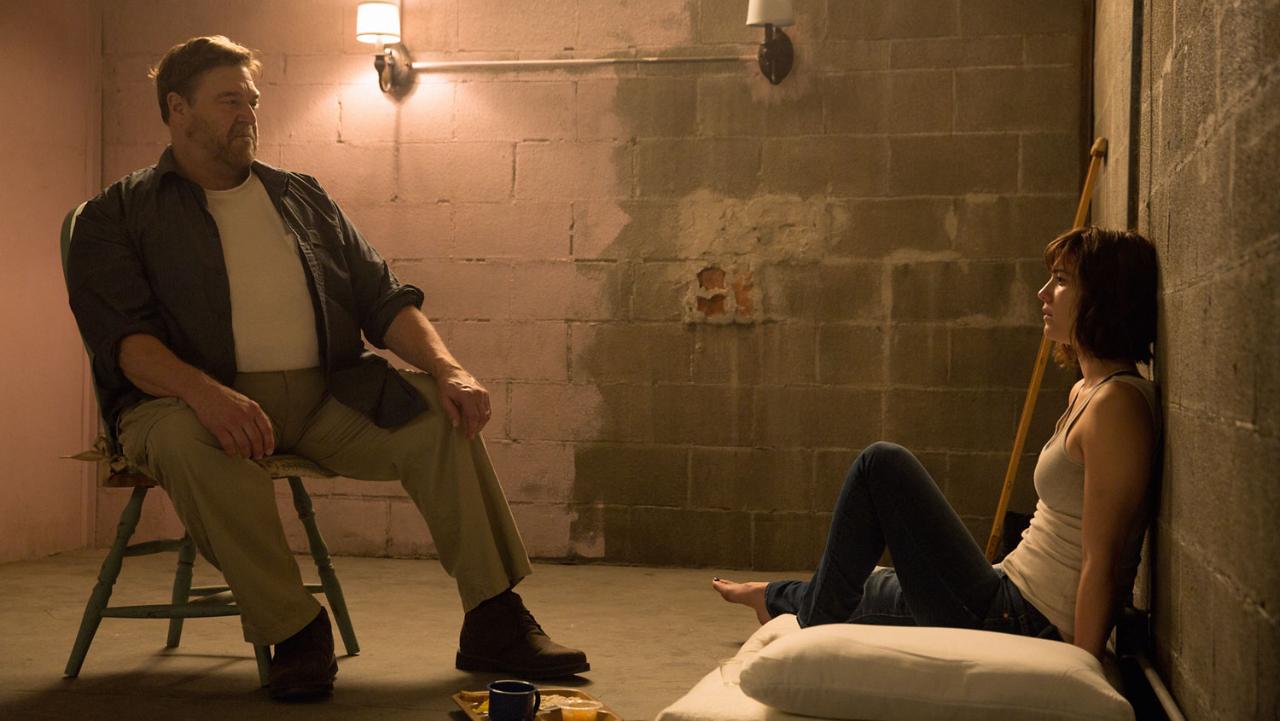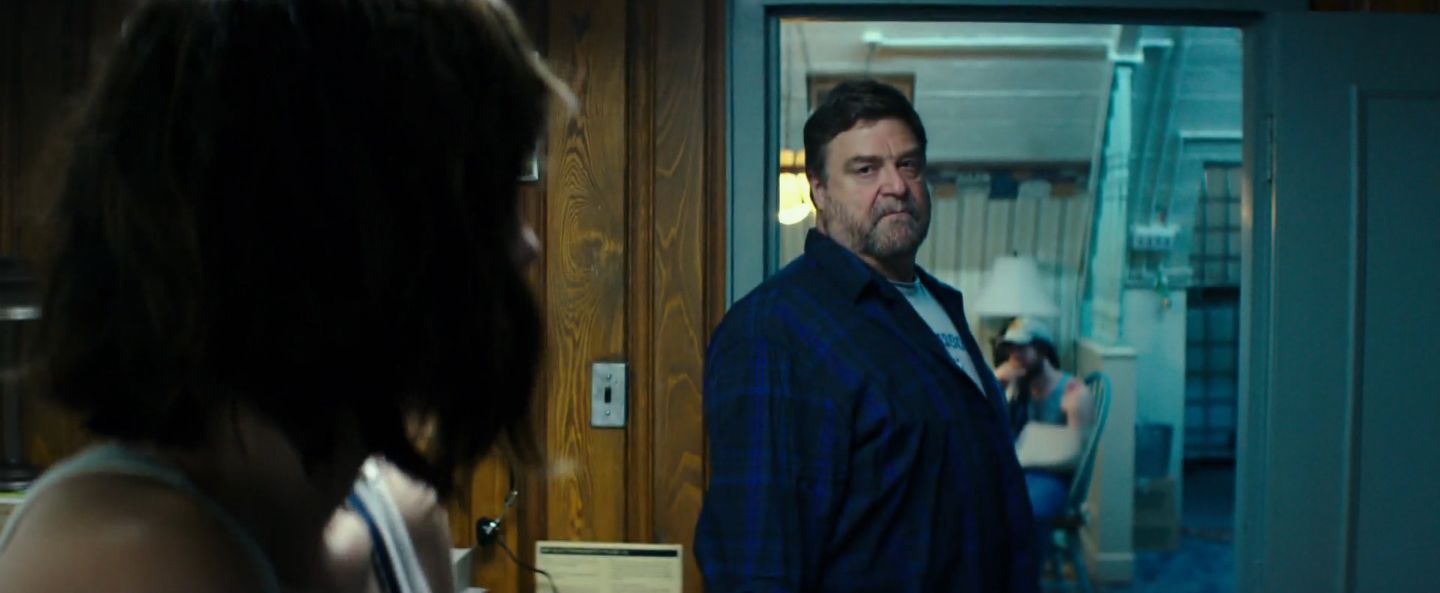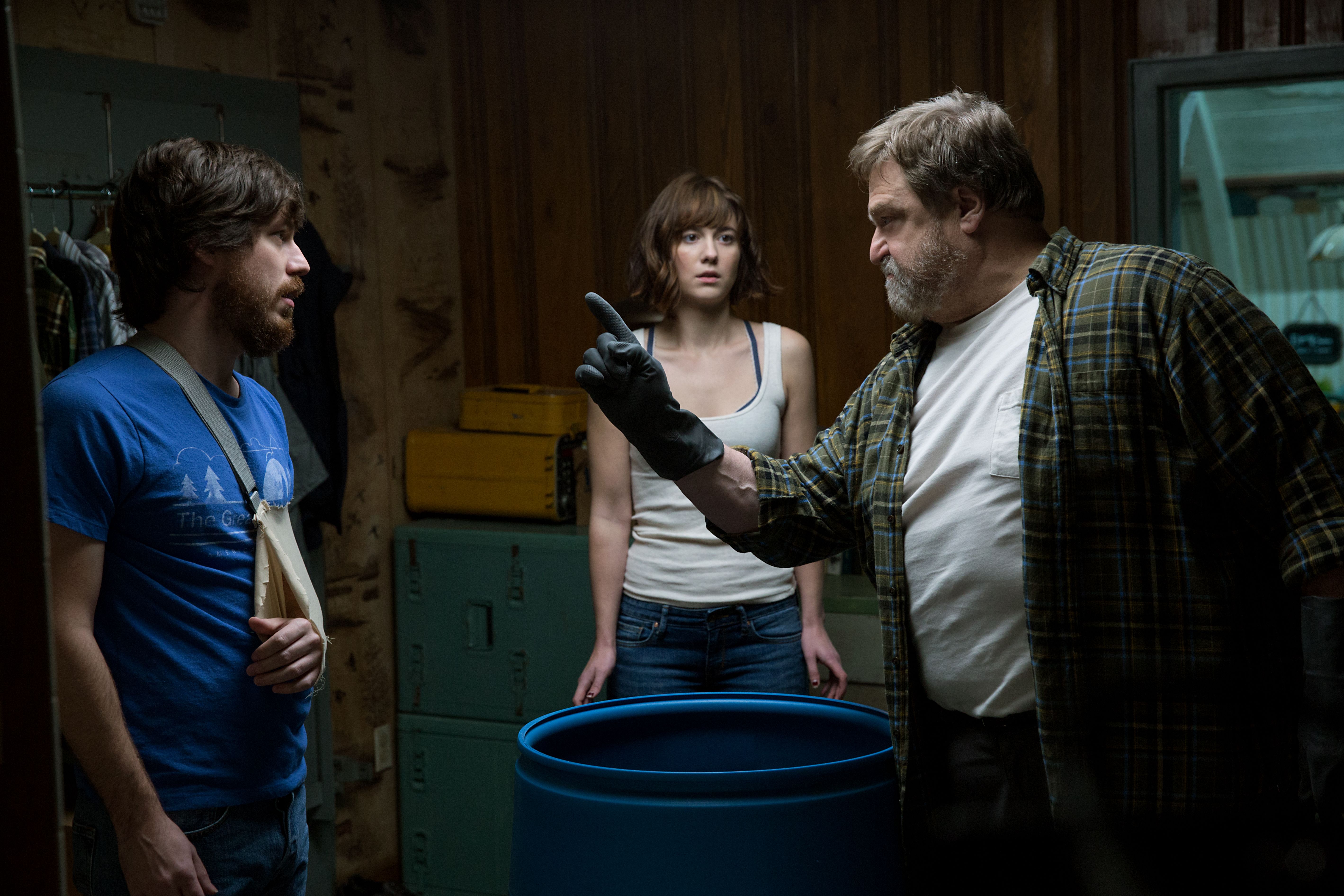Does Howard in “10 Cloverfield Lane” fit the description of a typical domestic abuser?
Quick Answer: 10 Cloverfield Lane is a picture crossing many genres. Its core tension is driven by the relationship between Michelle, a woman trapped in a doomsday bunker during an alien attack, and Howard, the domineering man responsible for the bunker’s construction. Howard showcases all of the textbook traits and tactics of a domestic abuser, keeping Michelle in his company despite her wishes using scare tactics, threats of violence and emotional manipulation.
10 Cloverfield Lane (2016) is a tough picture to categorize. It’s easily a thriller, certainly science fiction, and often a mystery. It has moments of comedy, social allegory and straight-up horror. The film effectively blends all these genres into one pulsating story with a central tension driven by the picture’s greatest mystery: the character of Howard, played by John Goodman. Howard is an ex-Navy satellite expert with an intricate and well-designed doomsday bunker under his farm house. That’s what we know about him. Everything else is shrouded in mystery and deception, tugging Howard back-and-forth between a socially awkward hero and a mentally ill psychopath.
The film opens with Michelle (Mary Elizabeth Winstead) driving in flight of a seemingly abusive boyfriend she’s quitting, only to smash her car and wake up chained to the wall in Howard’s bunker. He saved her life, he says, and in the indiscriminate time she’s been hooked up to an IV and resting on a mattress in his apocalyptic man cave, some kind of alien attack happened above ground. The air is poisoned, he says, and everyone is dead. He was on his way back to the house when he saw her car accident and saved her life. And for that, he says, she should be grateful.

John Goodman and Mary Elizabeth Winstead
Details about Howard’s past and the hints toward his true mental state are in the subtext of 10 Cloverfield Lane’s dialogue and Howard’s curious actions. His teetering between hero and villain mostly ends when Michelle uncovers evidence that a woman known to be missing once spent time in the bunker. Assumptions are made, both by Michelle and by the audience, with the signs suggesting Howard captured and killed her.
The source of most of 10 Cloverfield Lane’s drama is predicated by textbook domestic abuse on the part of Howard. Reviewing a list of common tactics and warning signs of domestic abusers reveals Howard fits the bill without question. There are theories that suggest he isn’t the villain of the film—that he isn’t, in effect, the Cloverfield monster—instead positing that Emmett (John Gallagher Jr.) is the real instigator and Howard is merely looking out for Michelle in his own weird way. The theories have some merit, but Howard is clearly a rough individual, and his perfect fit within the textbook descriptions of a domestic abuser suggest he’s the film’s true monster.
New Hope for Women, a Maine-based support center for victims of domestic abuse, has an outline of tricks and tactics used by abusers on their website. The way Howard fits into them is remarkable. His lack of empathy for a girl who has woken up chained to a wall in a bunker indicates his preference for control and manipulation rather than attempting to understand her. He maintains Michelle shouldn’t bother thinking about or attempting to contact anyone she knows, insisting everyone topside is dead despite not really knowing the truth about what has happened. He claims everything he does is in her self interest, but takes no time to actually listen to what she says or care about how she feels.

John Goodman and Mary Elizabeth Winstead
Some of the abuse tactics are:
Jealousy - At the start of the relationship, an abuser will equate jealousy with love. The abuser will question the victim about who the victim talks to, accuse the victim of flirting, or become jealous of time spent with others. The abuser may call the victim frequently during the day, drop by unexpectedly, refuse to let the victim work, check the car mileage, or ask friends to watch the victim.
Howard isn’t thrilled when Michelle first meets Emmett, and before that, shows a dismissive regard for Michelle’s claims that her boyfriend will be searching for her. “Nobody is looking for you,” he says. The way he keeps a close eye on her interactions with Emmett are much of the foundation of the theories that suggest Emmett is the true villain. Howard’s watchful eye, however, just points to his severe jealousy. Once Emmett is out of the picture, he’s able to live alone with Michelle as his sole companion as it seems he always wanted.
Controlling Behavior - In the beginning an abuser will attribute controlling behavior to concern for the victim (for example, the victim’s safety or decision-making skills). As this behavior progresses the situation will worsen, and the abuser may assume all control of finances or prevent the victim from coming and going freely.
Throughout the picture, Howard enters Michelle’s room whenever he pleases, without knocking or giving warning, stripping her of freedom to do anything without him knowing. He imposes specific rules and guidelines for her conduct that he claims are in the interest of her safety and the safety of their little underground family. Ultimately these rules serve to keep himself in charge and in control. He threatens her when she disobeys his rules and immediately seems confused about why her response is upset. He speaks for her when talking to Emmett and tells her how to feel.
Unrealistic Expectations - An abuser expects the victim to meet all of the abuser’s needs, to take care of everything emotionally and domestically.
Howard enjoys scaring and threatening Michelle, then accusing her of hurting his feelings because she doesn’t show him respect or thank him for all his hospitality. He sets expectations with disregard for her wishes, such as in the scene where he tells her “you’ll learn to love cooking.” He doesn’t care if she wants to cook or wants to help feed him; he believes she will do it and will enjoy it.
Isolation - An abuser will attempt to isolate the victim by severing the victim’s ties to outside support and resources. The batterer will accuse the victim’s friends and family of being “trouble makers.”
Isolation is Howard’s most obvious tactic. He keeps Michelle locked in a bunker and denies any suggestion that the outside world is worth contacting or investigating. He says the air is poisoned and walking outside would result in certain death.
Blames others for problems - An abuser will blame others for all problems or for the abuser’s own shortcomings. Someone is always out to get the abuser or is an obstacle to the abuser’s achievements. The victim or potential victim will be blamed for almost anything.
Howard tells a story about a wife who left him and took their daughter. He pities himself endlessly. At one point, he admits he caused the car accident that ran Michelle off the road, almost killing her, then immediately reminds her he saved her life. The importance of his handy doomsday bunker makes him feel powerful on the back of the rest of the world failing.
Blames others for feelings - An abuser will use feelings to manipulate the victim. Common phrases to look for: “You’re hurting me by not doing what I want.” “You control how I feel.”
...and Hypersensitivity - An abusive person is easily insulted, perceiving the slightest setbacks as personal attacks.
‘Nuff said.
Dual personality / “Dr. Jekyll and Mr. Hyde” - Explosive behavior and moodiness, which can shift quickly to congeniality, are typical of people who beat their partners.
The quality that makes Howard such a complex character is his volatility. When he’s not being belligerent or terrifying, he’s sort of a cool guy. He is charismatic and intelligent, with an awkward charm that makes him capable of empathy. But when he snaps, it’s a bullet to the head and a barrel of acid.

John Gallagher Jr., John Goodman and Mary Elizabeth Winstead
Fortunately, 10 Cloverfield Lane gives us a central female character who refuses to be a victim. She isn’t a passive, helpless woman who is forced to evolve into an image of toughness as a consequence of her situation. She starts strong and gets stronger. In the first scene, she’s leaving a guy she can’t be with anymore—and even though she’s running, she’s at least standing up for herself. Michelle then spends the rest of the film creatively trying to flee another violent man who has the means to kill her if she fails. When she finally escapes Howard and leaves the bunker, she’s given a moment of peace. She feels free and liberated. She pulls the mask from her DIY hazmat suit and breathes the air, discovering it isn’t poisoned at all, and believes everything Howard told her was a lie.
Of course, it wasn’t. At least some of what he said about life topside was true. Howard is a textbook abuser, but Michelle simply getting away from him isn’t enough to close her story. The metaphor isn’t over. When an abused woman leaves their abuser, the trouble doesn’t immediately end. She has to start down a new path. She soon discovers aliens really did attack the earth and she isn’t safe; another abuser steps in to replace Howard. Once she dispatches it, her character arc has a chance to close.
The Verge writes, “Michelle’s problems didn’t start with Howard, and they don’t end with him. They aren’t imaginary, like the toxic threat, and they aren’t just part of some vague general calamity. They’re specific and personal, and they require a specific, personal catharsis. And that’s the primary reason the big, direct confrontation is necessary in the final act. Michelle’s fight against the aliens completes an arc that began in the film’s opening moments, when she abandons her fiancé after a fight. As she tells Emmett later, she’s had experience with abusers. Her father was one, and her childhood fear and helplessness from dealing with him destroyed her courage. She responds to pressure by buckling and running. It’s unclear whether something significant happened with her fiancé that tapped into her memories of abuse, but for the purpose of the larger story, it doesn’t matter. What matters is that she sees her habit of running as a problem, one she’s ashamed of. That’s the problem that needs to be resolved, more than the problem of Howard’s concrete cage or the possibly imaginary apocalypse.”
In the film’s final shot, she is given the opportunity to drive one way toward Baton Rouge and enter a safe zone, or go the opposite direction toward Houston and join the fight against the alien attackers. She chooses the latter, opting to fight against the oppressive force instead of running to safety.
As noted, there is some credibility to the ideas that Howard isn’t the sole—or at least the primary—malevolent force in the film. But given the way he fits the characteristics of so many domestic abusers, it’s easy to accept him as the chilling villain he appears to be.

